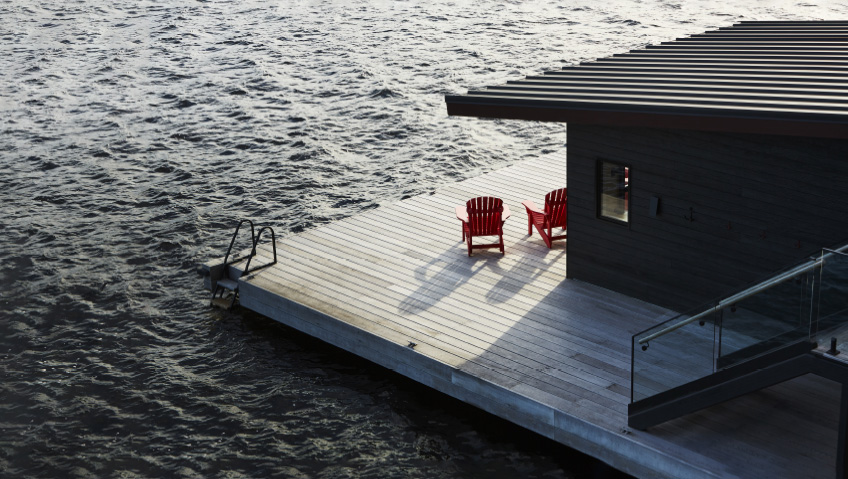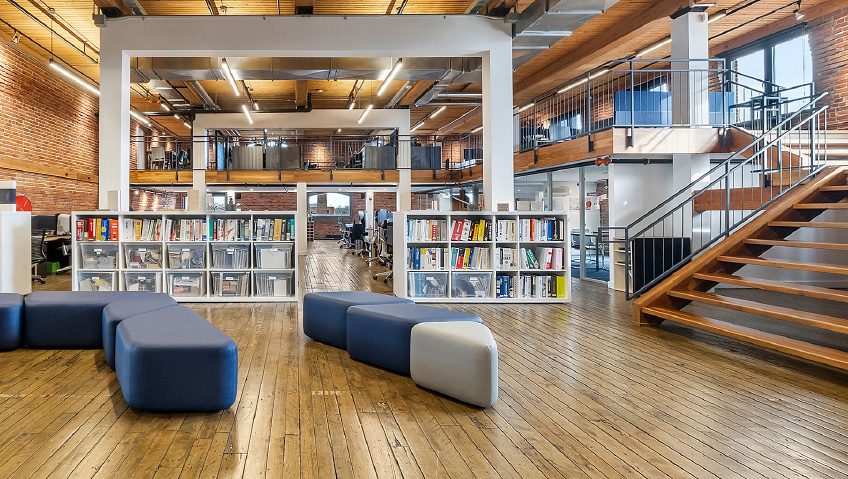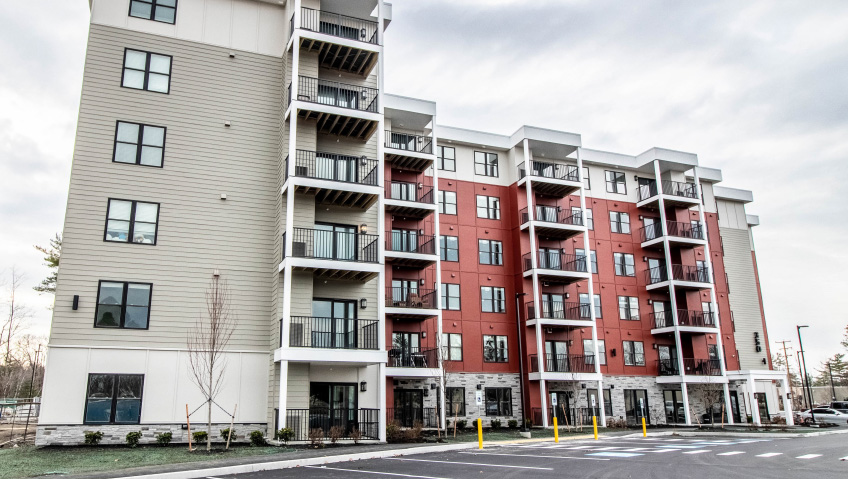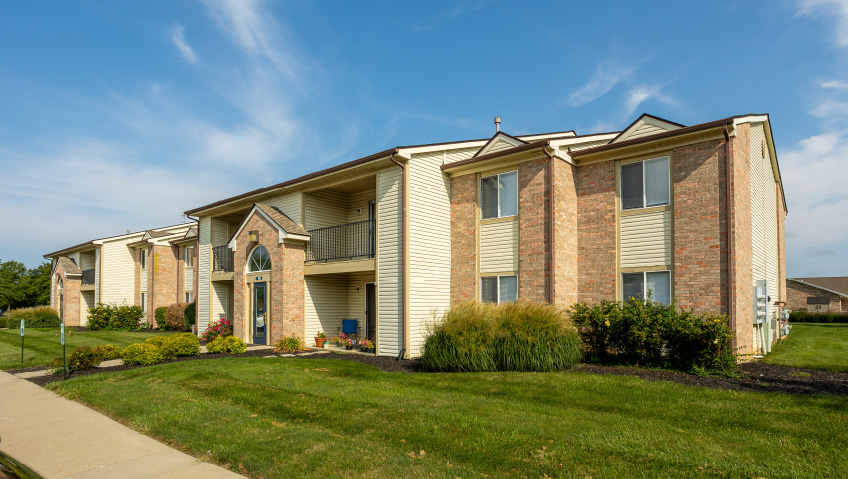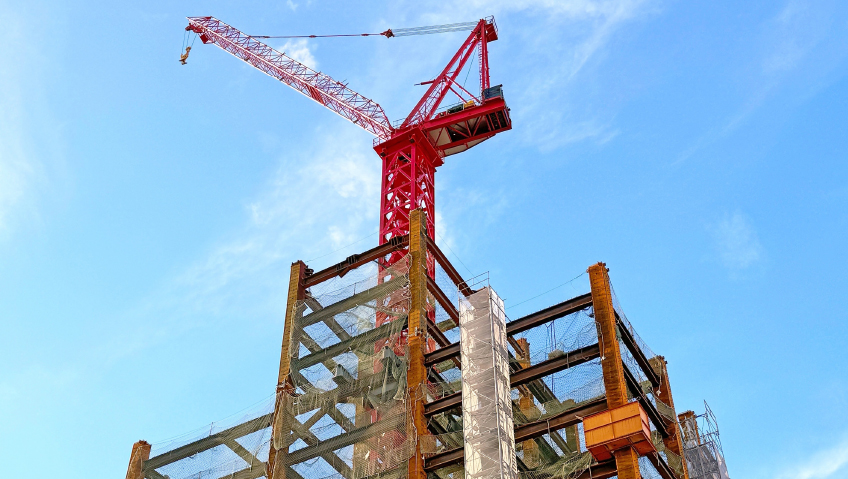Thoroughly eschewing the pessimistic belief that “the sky is falling,” Altius Architecture’s Graham Smith says the time to build and renovate is now.
Graham Smith is a man on a mission: educating clients about their housing options. As senior principal at Altius Architecture Inc., Smith not only knows his stuff about architecture, but everything involving the industry that fuels his passion, from the latest trends to building codes, sustainable construction methods and materials to interest rates. For Smith, nothing involving architecture exists in a vacuum.
The past three years during COVID-19 saw us question everything from how we live to where we work. So-called ‘remote jobs,’ which many believed would never replace in-person employment, became the norm for many who began asking, ‘Do I really need to live in a congested city like Toronto? Should I downsize? Is now a good time to renovate?’ Sticking with his clients throughout the pandemic, Smith and his team at Altius kept them in the loop about changes affecting their lives and housing goals.
Tough times don’t last
In a recent PDF to clients entitled Building on the Dip: An Architect’s Opinion, Smith boldly says: “I like recessions. Rarely will you hear Architects and Builders utter that phrase. I like recessions because they are the best and easiest times to get projects built.”
The genesis of Altius goes back to the early 1990s when Smith was an architecture student at the University of Waterloo. His voice is that of experience with the entire industry and how it is affected by global events. Interest rates go up and they go down. House prices increase and decrease.
None of this is news to Smith, who follows the markets with the keen eye of an economist who just happens to have an extensive background in architecture, including a BES.B/Arch, and BFA in Fine Arts and Architectural History from Queen’s University.
In Building on the Dip, Smith explains the ups and downs of the market over the years. From soaring interests rates in the late 1980s and 1990s to the burst of the dot-com bubble in 2000, the 17-month-long sub-prime collapse of the markets starting in October 2007, and the recent COVID crisis and soaring double-digit (in the case of timber, triple) price increases to building materials like drywall, copper, concrete, and glass.
“So what’s it going to be this time around?” Smith boldly asks. “Since the dip of 2016, our business of designing and building custom homes and cottages has been very busy. Though we’re not diversified in what we do, our clients are, and in the 25 years we’ve been in business, we’ve discovered that we’re recession-proof because the smart money builds during recessions.”
“We’ve seen this before”
As the world emerges from the pandemic, interest rates are climbing and housing sales slowing. Many of Smith’s clients are worried and perplexed, Smith remarks. “But we’re sitting here, as residential architects for decades, saying, ‘We’ve seen this before,’” says Smith from Altius’ Queen Street office in Toronto.
The markets, he explains, have been good for some years. After the World Health Organization (WHO) declared COVID a pandemic in March 2020, people started panicking that economic activity was going to dry up, evidenced in the prices of commodities. “It did the exact opposite,” he says.
“People couldn’t travel, and everybody started doing home remodelling or moved. Everyone was working from home and redoing their kitchens or backyards, and a lot of homeowners who were reasonably financially successful and living in a condo suddenly wanted a house with a backyard.” Many jumped head-first into the housing market, driving up prices, while the cost of labour and building materials increased.
“What we’re hearing is everybody saying, ‘Interest rates are seven percent—it’s a horrible time to build.’ No, it’s the opposite. If we look at the last four cycles of tightening going back to dot-com, the tightening of interest rates is transitory. We’re not going to see sub-two percent fixed mortgage rates probably ever again in our lifetime, but things will settle back into the three to five percent range, and it’s going to do that within the next two years,” he shares.
“So if you have money now, or need to borrow money to build, the big advantage is the price of everything is collapsing. We are trying to get this through to our clients. Twenty-twenty-three looks like the best time to build in the last five years. And if things keep going the way they are, it might be the best time in the past decade, because the price of everything is falling.”
Go for the prices
Since its founding, Altius has completed more than 650 projects. This includes urban residences and rural properties, cottages, chalets and more. Over the decades, the company has not only survived dips in the market but thrived. To its clients, Smith says that the present is not only the time to build, but that they’ll also get great deals on appliances and materials.
“At the moment, I can’t get you a Sub-Zero fridge for about another six to eight months, but if I order right now, it’s on sale. What does that tell you?” asks Smith. “Order books are drying up, supply chains are returning to normal, inventories are rising, and because it’s all arriving, demand is falling,” he says.
“If you walk into your local Home Depot right now, there are no empty shelves. They’re stacked to the roof. That’s a problem for Home Depot, but for consumers, it’s a great time. So we’ve been advising our clients to have their design work done—or at the very least, get their building permit—because if you’ve got a building permit you can sit on it and wait, and prices are going down,” he says. “We look at everything from a commodity perspective, and those prices don’t reach the consumer for 30 to 60 days trailing.”
Keep up, stay on top
For Smith and his 16-strong team at Altius Architecture, ‘keeping up with the time’ is about much more than architectural trends. It also means staying on top of such things as materials, technology, zoning changes, and construction methods.
“When we first started out, we were ‘modern’ architects,” he explains, “and back in the 1990s, ‘modern’ was a four-letter word in Toronto. Then in the early 2000s, we were ‘green’ architects. We didn’t change a single thing we did—we were still ‘modern’ architects—but all of a sudden, modern was green. Fast-forward another 20 years, and people are seriously considering that maybe some of those British colonial models we brought to Canada aren’t really good in our climate, where it goes from minus-30 to plus-30 degrees.”
One of the biggest shifts Smith has seen is in technology such as lighting. When Altius was formed, inefficient, heat-generating incandescent light bulbs were the norm. Today’s LED lighting provides greater illumination, no waste heat, and is more energy-efficient. Lighting, together with improved insulation, new building materials and methods, improved HVAC, and more are helping the firm’s clients move closer to certified, passive Net-Zero housing and eliminating or offsetting greenhouse gas emissions.
And as the price of electricity keeps rising, Smith believes greener energy alternatives, such as solar panels, make more sense today than a decade ago. “The number one reason we did sustainable practices was to save money for our clients, mostly in long-term operating costs,” he says. “A well-built, sustainably designed home is comfortable. Cool in the summer, warm in the winter, and it doesn’t have chills, drafts… It’s just a better house.”
The ‘what now?’ generation
Closely following the real estate market, Smith is seeing more people in Toronto buying houses, tearing them down, and rebuilding them as single-family homes, with much of this activity led by Millennials. Baby Boomers drove the real estate market of the 1980s, he says. Gen-X’ers got houses at amazing prices in the 1990s. Now, over 30 years later, their children are in the market.
This is presenting this new generation with the challenge of not only buying property in competition with their Canadian peers but also with the half-a-million immigrants expected to arrive in Canada this year, many with money in their pockets.
“It’s fierce, fierce competition,” he says. “Oddly enough, we’ve just come out of the biggest residential construction boom, which happened not in spite of COVID but brought on by it. And as everything is cooling off, they’re trying to taper inflation and achieve a soft landing. The U.S. might, but Canada probably will not,” he posits.
“But what does that mean for consumers in the here and now, between opportunities for Millennials maybe to get in on a corrected housing market, or for anybody else to be building? It’s a very interesting time.”

